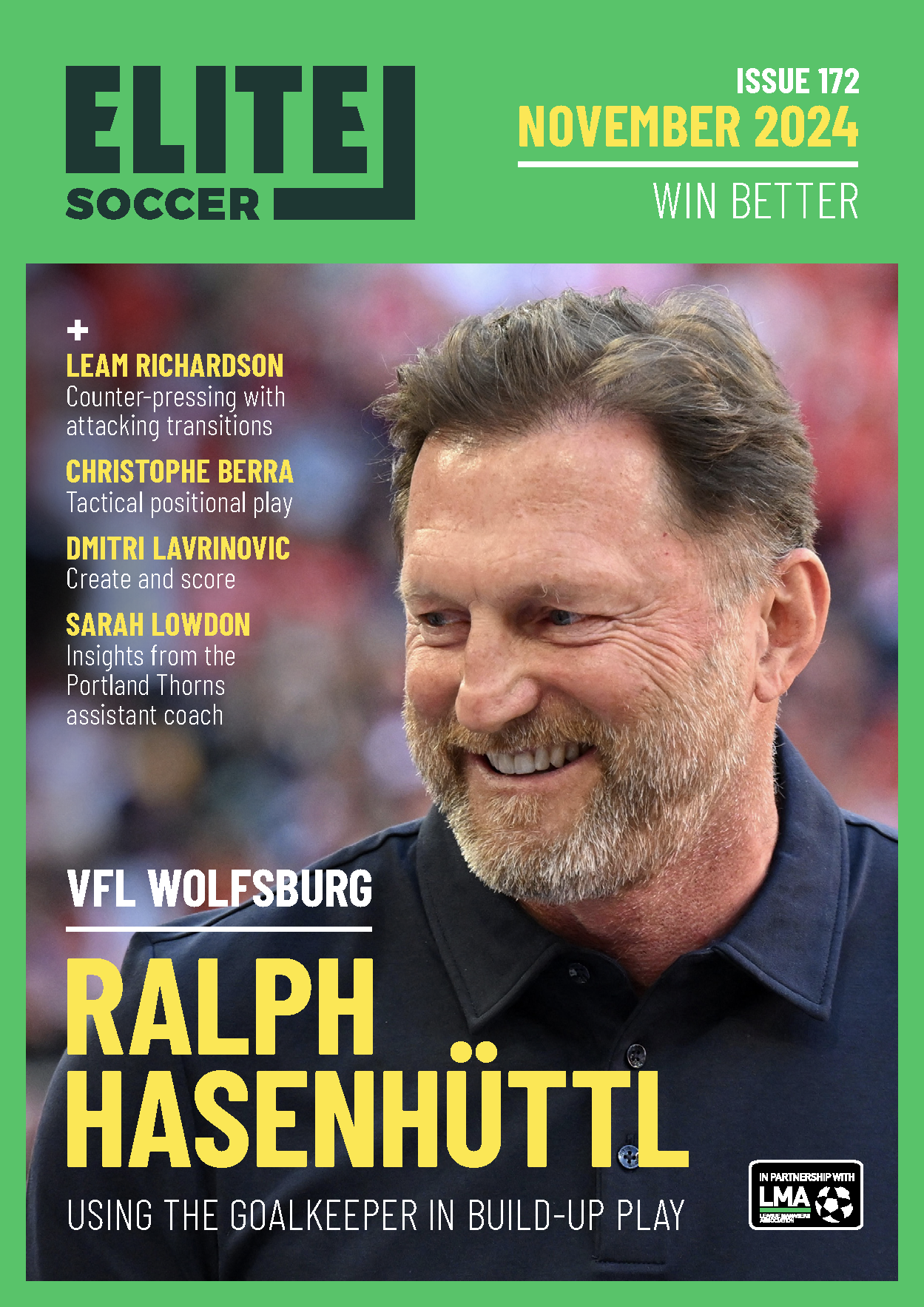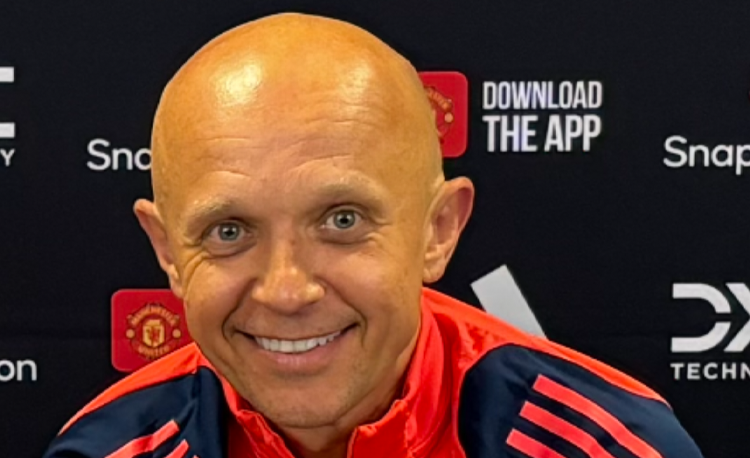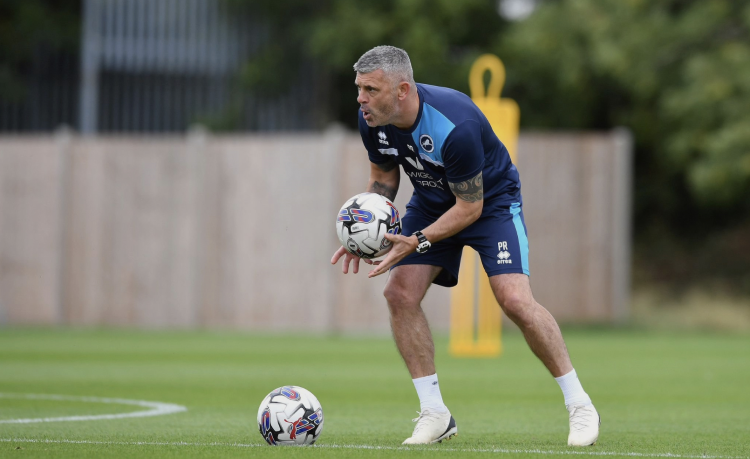You are viewing 1 of your 1 free articles
Finishing in the box
The vast majority of goals scored in the penalty area are achieved using one or two touches. This session therefore rehearses quick thinking and fast shooting in danger areas, where anticipation and speed of thought is key.
| Area | Penalty box |
| Equipment | Balls, mannequins, goals |
| No. of Players | 2 (striker and keeper) |
| Session Time | Practice 15mins, development 45mins |
The vast majority of goals scored in the penalty area are achieved using one or two touches. This session therefore rehearses quick thinking and fast shooting in danger areas, where anticipation and speed of thought is key.
Instinct is one thing, though we will ensure players practise different techniques too, with balls being served to them at varying speed and height in order to create a variety of challenges.
This whole session relies on being played at high intensity.
What do I get the players to do?
Aside from the use of servers and a keeper, players work individually using only the space in the penalty box. The first exercise is set up near the edge of the area, with the attacking player surrounded by four mannequins (1).
His job is to receive passes from either side – controlling with a first touch before firing at goal. The ball must stay within the square. We will vary the size of the area the player operates in depending on his ability – the closer the mannequins are placed, the more difficult the task.
We serve three balls from either side, then on a second practice we begin to vary the deliveries, with bounced balls, balls along the floor and passes made with greater pace.
1
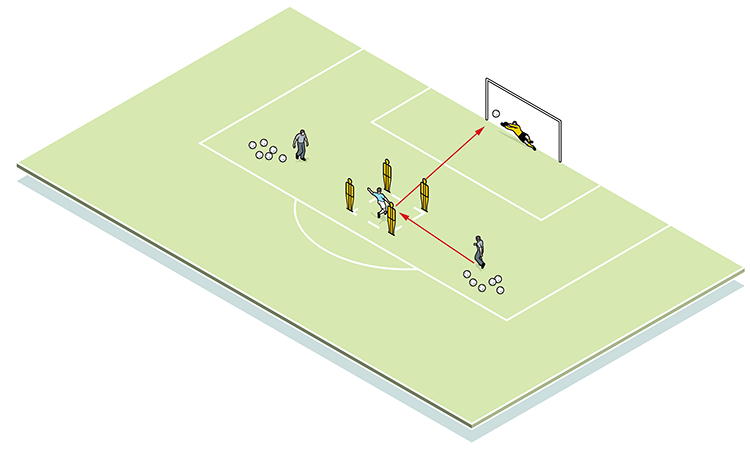
How do I progress the session?
To progress we rearrange the mannequins and scatter them at points around the penalty spot.
This second exercise again uses four passes, with one- or two-touch finishing. Server 1 stands on the edge of the box while server 2 is further back outside the area. Balls one, two and four are fed in the direction of the attacker by server 1 (2a/c). The attacker must run onto the passes and finish. Because ball three is fed from further back, the attacker can meet the ball, take a touch, then turn and shoot at goal (2b).
Any ball that hits a mannequin stays in play and can be shot again at goal.
2a

2b
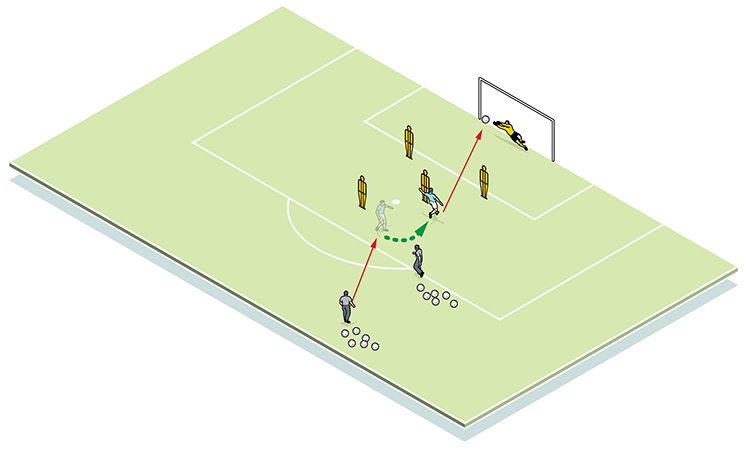
2c
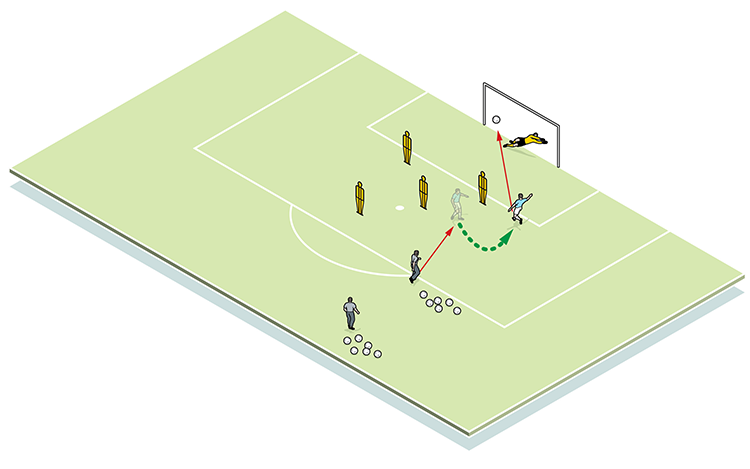
The final development uses a 2v2 attack versus defence scenario plus an additional supporting forward on each side of the penalty box (3a).
The coach, standing outside the area, feeds a ball into either striker. The duo must combine to fire as many shots on goal in 60 seconds. They can use the wide players – who have two touches – to fashion better chances at goal (3b). Should defenders win possession, a new ball is fed in by the coach.
3a

3b

What are the key things to look for technically/tactically?
They should display anticipation, imagination, a good touch at all times, and unwavering concentration. And as this is an attack-minded session, we expect them to hit the target whenever possible.
Related Files
Editor's Picks
Using the goalkeeper in build-up play
Pressing principles
Intensive boxes drill with goals
Penetrating the final third
Creating and finishing
My philosophy
Pressing initiation
Compact team movement
Defensive organisation
Coaches' Testimonials

Alan Pardew

Arsène Wenger

Brendan Rodgers

Carlos Carvalhal

José Mourinho

Jürgen Klopp

Pep Guardiola

Roy Hodgson

Sir Alex Ferguson

Steven Gerrard
Related
Coaches' Testimonials

Gerald Kearney, Downtown Las Vegas Soccer Club

Paul Butler, Florida, USA

Rick Shields, Springboro, USA

Tony Green, Pierrefonds Titans, Quebec, Canada
Join the world's leading coaches and managers and discover for yourself one of the best kept secrets in coaching. No other training tool on the planet is written or read by the calibre of names you’ll find in Elite Soccer.
In a recent survey 92% of subscribers said Elite Soccer makes them more confident, 89% said it makes them a more effective coach and 91% said it makes them more inspired.
Get Monthly Inspiration
All the latest techniques and approaches
Since 2010 Elite Soccer has given subscribers exclusive insight into the training ground practices of the world’s best coaches. Published in partnership with the League Managers Association we have unparalleled access to the leading lights in the English leagues, as well as a host of international managers.
Elite Soccer exclusively features sessions written by the coaches themselves. There are no observed sessions and no sessions “in the style of”, just first-hand advice delivered direct to you from the coach.



